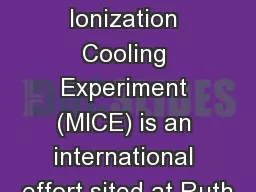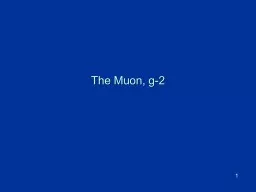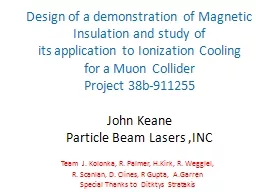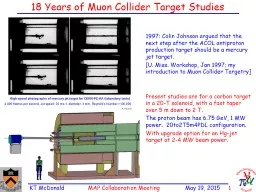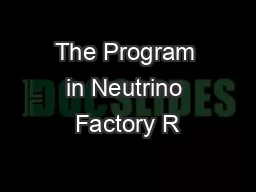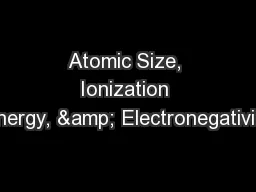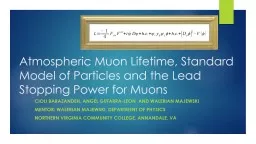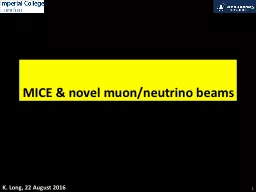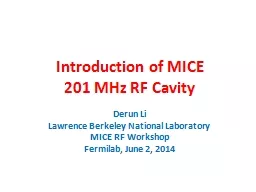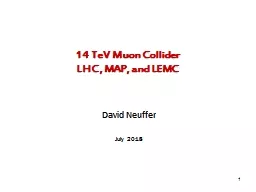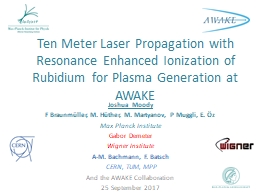PPT-Abstract: The Muon Ionization Cooling Experiment (MICE) is an international effort
Author : tawny-fly | Published Date : 2018-02-22
muon beam A pair of identical 3m long spectrometer solenoids will provide a 4tesla uniform field region at each end of the cooling channel The emittance of the
Presentation Embed Code
Download Presentation
Download Presentation The PPT/PDF document "Abstract: The Muon Ionization Cooling..." is the property of its rightful owner. Permission is granted to download and print the materials on this website for personal, non-commercial use only, and to display it on your personal computer provided you do not modify the materials and that you retain all copyright notices contained in the materials. By downloading content from our website, you accept the terms of this agreement.
Abstract: The Muon Ionization Cooling Experiment (MICE) is an international effort: Transcript
Download Rules Of Document
"Abstract: The Muon Ionization Cooling Experiment (MICE) is an international effort"The content belongs to its owner. You may download and print it for personal use, without modification, and keep all copyright notices. By downloading, you agree to these terms.
Related Documents

